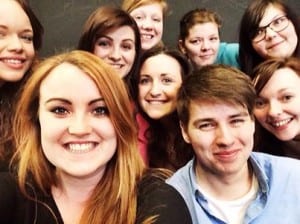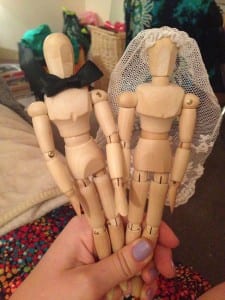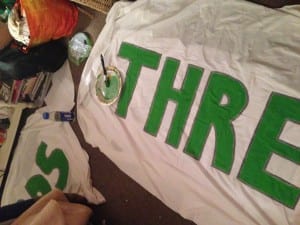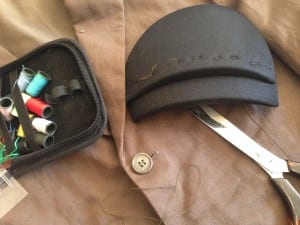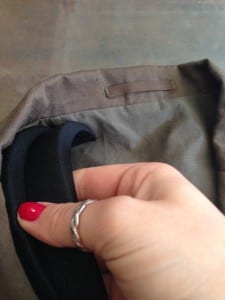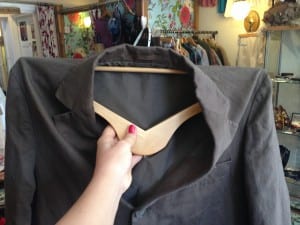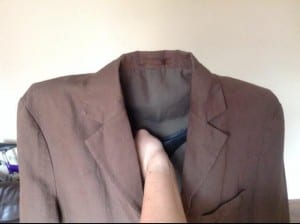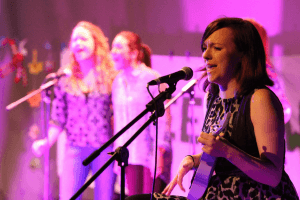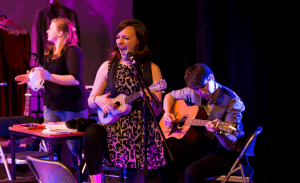Throughout the process of Three Words not only was I the Production Manager, but I also took on the role as Lighting Designer (LD). Unlike a scripted play, our company devised the performance from scratch so I wasn’t able to go through our script from day one and think about ideas for lighting the stage, frankly because we did not have a finished script until a few weeks before the performance. When taking on a devised piece of work, this is something that a LD especially, has to deal with. Instead, I had to write notes down when scenes were first created and developed about the atmosphere and the intentions of the scene, so I could slowly put together a lighting design.
Francis Reid states that “the lighting designer is not some rather grand person who appears towards the end of the rehearsals and implies: ‘Right! You, Director, have done your production bit and you, Designer, have done your scenic bit. Stand aside and I will light the result of your (pathetic) efforts!” (2001, p. 90). The LD is in fact a part of the production team and communicates with the Director. Ultimately, the LD gives the director what he wants. All the way through the process I arranged meetings with Tom (Director) and Shellie (Stage Manager) to discuss ideas of what his initial vision of his production was. He opted for a production that was exciting, fun and visually stimulating. The first idea that sprang to my mind was adding lots of colour. The most important thing to remember when adding colour to lights is to “determine what role colour will play in the production style” (Reid 2001, p. 77). We need to think, ‘what do these colours represent?’ and ‘will a certain colour portray a certain emotion?’ For Three Words, I suggested a colour scheme of blue, purple, pink, green and orange, instead of always utilising straightforward white lights. These colours do not each represent an emotion necessarily; in fact they were not even used to create a tense or happy atmosphere. When blended together, these colours formed a visual picture that was vibrant and hopefully intriguing for the eye of the audience. When discussing colours with the Director, we agreed that having such a range of colours also essentially portrayed the range of stories and situations we put into our production. I even managed to take our company colours pink and green (from our programmes and posters) and light our pre-set with them. Below are some photos taken during our technical rehearsal in the Lincoln Performing Arts Centre auditorium & attached are my Magic and Focus sheet:
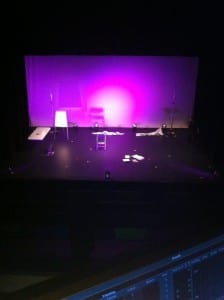
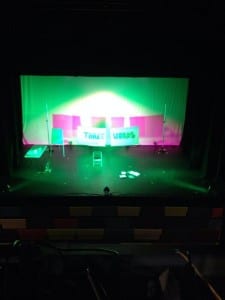
Like Brecht, we utilised some of the methods which he created for Epic Theatre. Such as our flipchart with three words that described each scene, this resembles Brecht’s use of placards which also explained each new scene. He basked in the fact that the audience were aware they were watching actors performing a play, set changes would be in full view. I was also influenced by how he employed his lighting on stage. Many of his lights were visible to the audience, much like ours, and even our operator was on stage with us which eliminated any impression of a naturalistic feel. His use of lighting would indicate a passing of time or a chance in scenes, which is exactly what I aimed to use ours for. We did not necessarily require the lights to create a mood or atmosphere, if colour was added during a scene it would be to suggest a change in tone or pace of the dialogue, not a change in the actor’s emotions. Fundamentally, “Brecht wanted above all a space to tell his story in” (Leach 2004, p. 123) which I believe I also created with my lighting design plans.
Another influence I encountered during our process was Headlong Theatre Company. I believe their lighting design, fantastically created by Malcolm Rippeth in many of their productions, transports their audience into a scene. They use colour, generally subtle, but which enhances the mood and atmosphere of a production. Below are photographs from their current production of Spring Awakening (2014) and past production of Chimerica (2013):

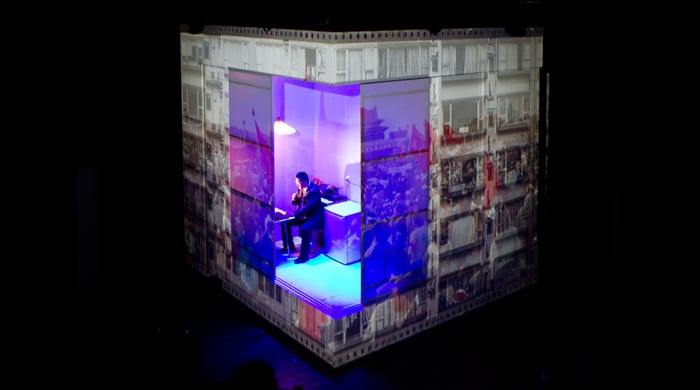
I sought to take an essence of Headlong’s lighting and create our own style. Something that was bright and colourful, something that the audience would visually enjoy. I have thoroughly enjoyed my role of Production Manager, however my passion lies in designing lights. I can only hope this showed through our production of Three Words. If I have any three words to say its: Watch this space. Below are some photos taken from our dress rehearsal which show some of my colourful lighting design in action on the stage:
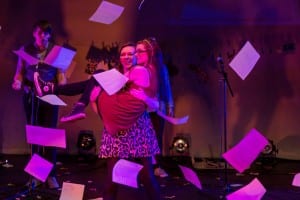
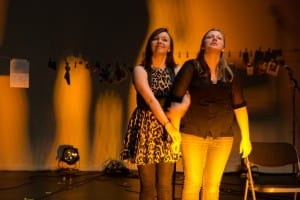
Works Cited
Reid, F. (2001) The Stage Lighting Handbook, New York: Routledge.
Leach, R. (2004) The Makers of Modern Theatre: An Introduction, London: Routledge.
